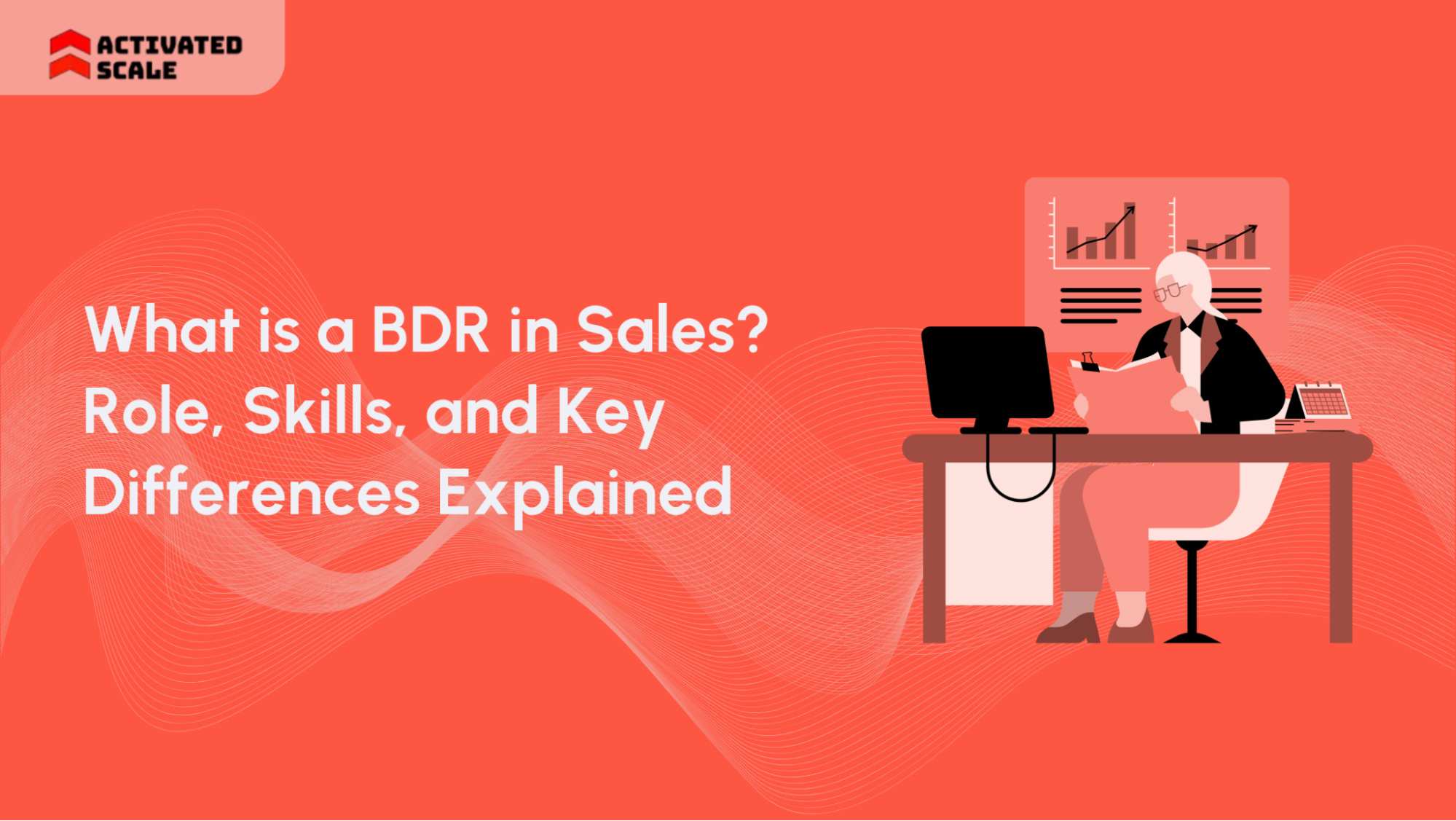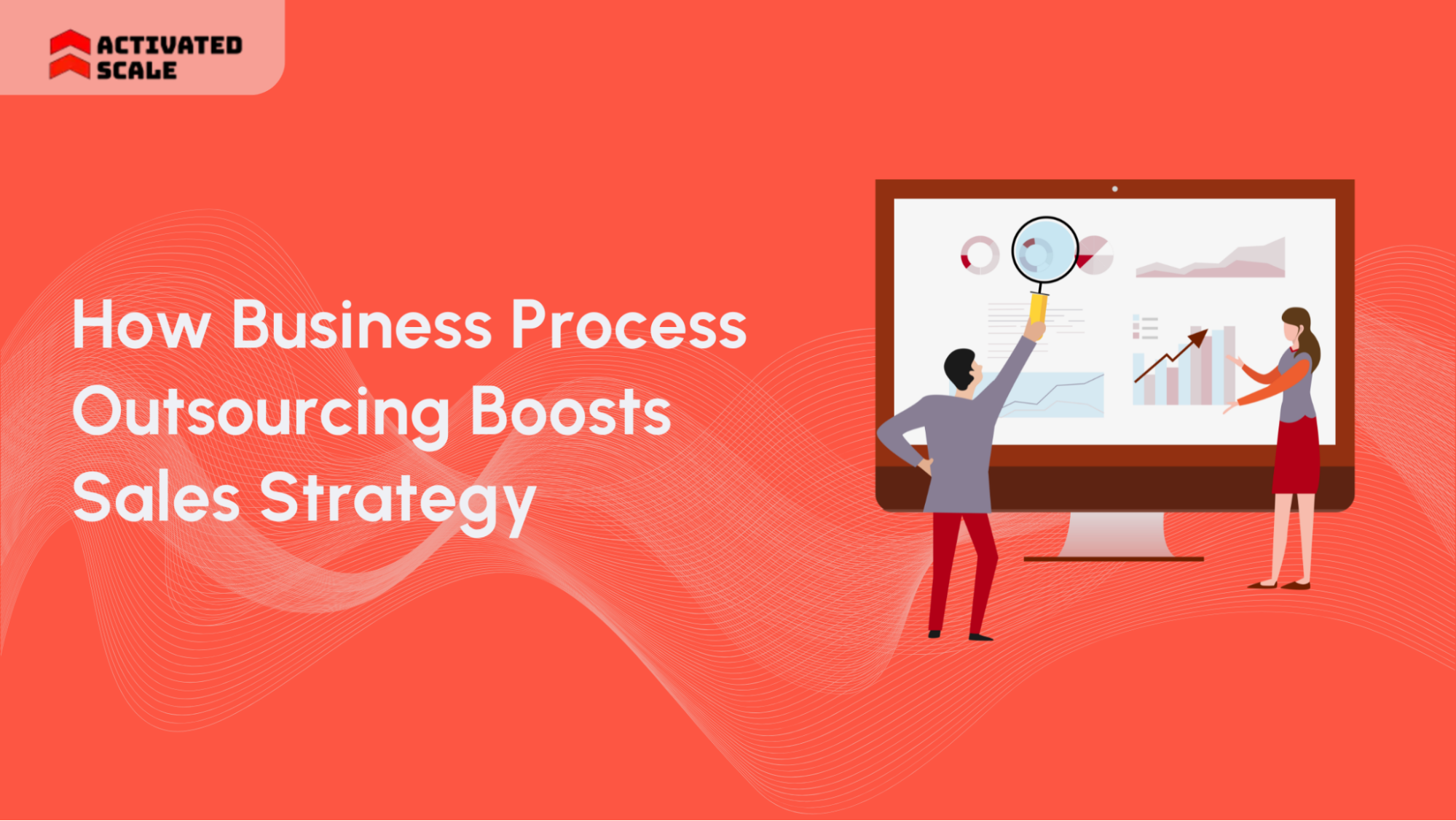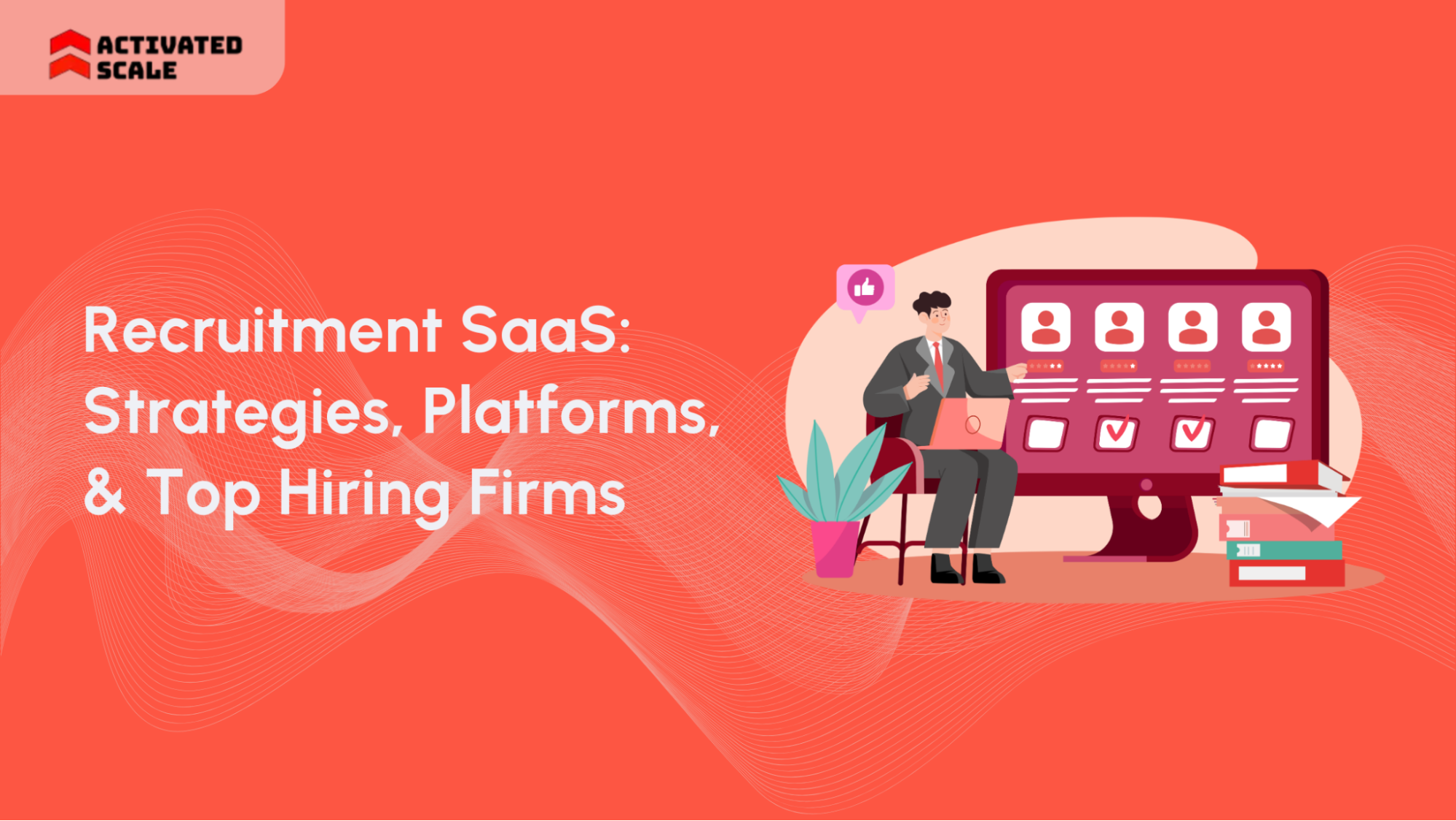Sales can’t grow on momentum alone; it needs people dedicated to opening doors and starting conversations. That’s where Business Development Representatives (BDRs) come in.
They are often the first human touchpoint for potential customers, shaping the early impression of your company and building the foundation of the sales pipeline.
For startups and growing businesses, understanding the BDR role is key to scaling revenue without wasting precious time or resources.
In this guide, we’ll break down what a BDR does, how they differ from other sales roles, the skills they need, and the common mistakes to avoid.
Key Takeaways
- BDRs drive pipeline growth by identifying, qualifying, and passing leads, ensuring sales teams focus on high-value opportunities.
- BDR, SDR, and AE roles differ, BDRs handle outbound, SDRs manage inbound, and AEs close deals.
- Daily tasks include prospecting, lead qualification, scheduling meetings, and maintaining CRM hygiene.
- Skills matter more than degrees, communication, resilience, and tool knowledge often outweigh formal education.
- Career paths are flexible, BDRs can grow into AEs, sales leaders, or even pivot into marketing or operations.
What is a Business Development Representative in Sales (BDR)?
A Business Development Representative, or BDR, is often described as the bridge between marketing and sales.
Their role is to create new business opportunities by identifying potential customers, sparking initial conversations, and qualifying leads before passing them to the sales team.
While they may not close deals directly, BDRs set the stage for revenue growth by ensuring sales teams focus on prospects most likely to convert.
The Evolution of the BDR Role in Modern Sales
The BDR role has shifted dramatically over the years. Previously, it was limited to cold calling or mass outreach.
Today’s BDRs use data-driven insights, multichannel outreach, and specialized tools to connect with prospects in a more meaningful way.
They’ve become an essential part of go-to-market strategies, especially for SaaS companies and startups.
How BDRs Fit into the Sales Ecosystem
Think of marketing as the spark, and account executives (AEs) as the closers, BDRs are the connectors in between.
They qualify inbound leads that marketing generates, and they also drive outbound outreach to expand the pipeline.
Without them, AEs would spend too much time chasing unqualified prospects instead of focusing on closing.
Also Read: Understanding the Role and Building a BDR Team
BDR vs SDR vs AE: Understanding Key Differences
Sales teams often use terms like BDR, SDR, and AE interchangeably, but these roles carry distinct responsibilities.
Understanding the differences helps founders, sales leaders, and job seekers know who does what in the revenue engine.
BDR vs SDR: Outbound vs Inbound Focus
- BDRs (Business Development Representatives): Primarily focus on outbound outreach—cold calls, personalized emails, and LinkedIn connections. They generate opportunities that didn’t exist before.
- SDRs (Sales Development Representatives): Handle inbound leads that come through marketing campaigns, websites, or referrals. Their job is to qualify and nurture these prospects before moving them forward.
Together, BDRs and SDRs ensure both inbound and outbound channels stay active.
BDR vs AE: Lead Generation vs Deal Closing
- BDRs: Spark conversations and qualify prospects.
- AEs (Account Executives): Take qualified leads from BDRs and manage the full sales cycle, from demo to negotiation to closing.
This division of labor allows AEs to focus their time on high-value activities—building relationships and closing deals.
When Companies Need Each Role
- Early-stage startups: Often start with one or two BDRs to build pipeline before hiring AEs.
- Growth-stage companies: Add SDRs to handle inbound demand while BDRs continue outbound.
- Mature teams: Usually have BDRs, SDRs, and AEs working in sync to cover all bases.
Career Progression: BDR → SDR → AE Path
For many in sales, the BDR role is a launchpad. A typical path looks like:
- BDR: Prospecting and pipeline creation.
- SDR: Lead qualification and nurturing.
- AE: Full-cycle selling and closing deals.
This pathway not only builds strong foundational skills but also gives professionals a clear route to higher responsibility and income.
Also Read: Sales Executive Job Description and Responsibilities
Key Responsibilities and Daily Tasks of a BDR
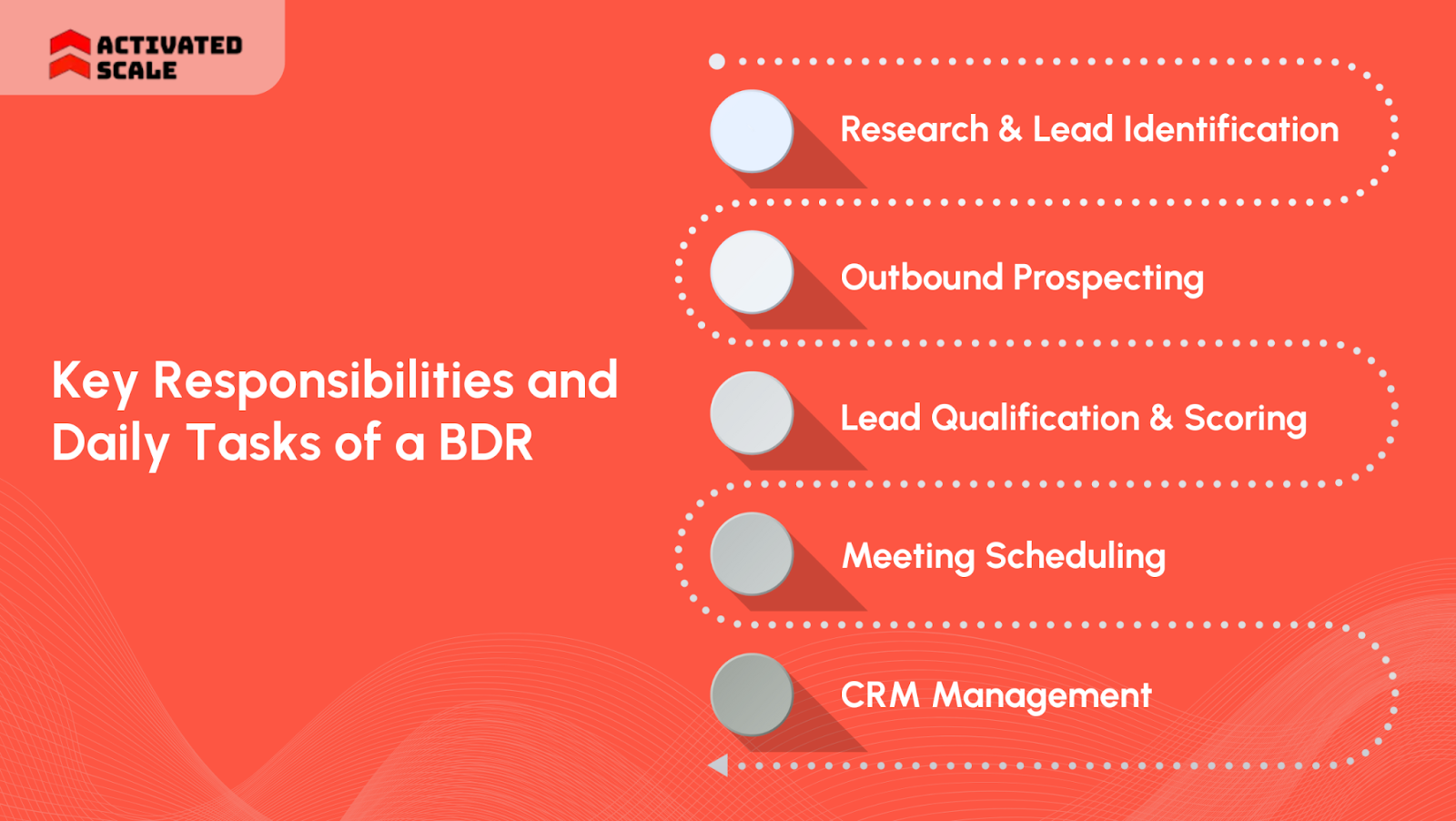
A BDR’s day is structured around finding new business opportunities and moving prospects toward meaningful conversations. While tools and strategies vary, the core responsibilities remain consistent across industries.
1. Research and Lead Identification
BDRs begin with research. They study industries, company structures, and buyer personas to identify decision-makers.
The goal is to uncover accounts that fit the company’s ideal customer profile, ensuring time is spent on the right prospects.
2. Outbound Prospecting Activities
- Cold calling executives to spark interest.
- Writing personalized outreach emails.
- Sending LinkedIn connection requests with tailored messaging.
- Using multichannel cadences to maintain consistent visibility.
These activities form the backbone of outbound selling.
3. Lead Qualification and Scoring
Not every lead is worth pursuing. BDRs assess interest, budget, authority, and timing before passing opportunities along. This qualification ensures AEs focus on high-potential accounts.
4. Meeting Scheduling and Sales Handoffs
Once a lead is qualified, the BDR’s role shifts to scheduling a discovery call or demo for the AE. A clean, well-prepared handoff improves conversion rates and shortens the sales cycle.
5. CRM Management and Data Hygiene
BDRs document every interaction in CRM systems. Accurate notes, updated contact information, and activity logs are essential for team alignment. Poor data hygiene can stall deals and frustrate AEs.
For startups that don’t yet have structured sales teams, bringing in a vetted BDR through Activated Scale ensures these responsibilities are handled with professionalism and consistency, without the long wait or risk of a bad hire.
Also Read: How a BDR Playbook Fuels Startup Growth
Essential Skills and Qualifications for BDR Success
The success of a Business Development Representative depends less on years of experience and more on mastering a blend of technical know-how and interpersonal finesse.
A strong BDR balances the use of tools with the art of conversation.
Critical Hard Skills (CRM, Sales Tools, Data Analysis)
- CRM proficiency: Tools like Salesforce or HubSpot are daily companions.
- Sales automation platforms: Outreach, Salesloft, or Apollo help streamline prospecting.
- Data analysis: Reading reports to identify patterns and refine targeting.
These skills allow BDRs to work smarter, scale their efforts, and deliver measurable results.
Essential Soft Skills (Communication, Resilience, Time Management)
- Communication: Crafting compelling emails and holding confident conversations with executives.
- Resilience: Handling rejection daily without losing momentum.
- Time management: Balancing dozens of tasks, from research to follow-ups, within tight schedules.
Soft skills often determine long-term success, since BDRs live in a world of constant outreach and frequent “no’s.”
Educational Requirements and Certifications
Most BDRs have backgrounds in business, marketing, or related fields, but degrees are not strict requirements.
Certifications in sales methodologies, such as MEDDIC or Challenger, can help candidates stand out.
Industry Knowledge and Market Understanding
A strong grasp of the target industry matters. BDRs who understand buyer pain points, regulations, and competitive landscapes connect faster and build credibility in early conversations.
Many startups don’t have time to train every new hire from scratch. Partnering with Activated Scale gives them immediate access to BDRs who already possess these skills and industry awareness, helping teams ramp faster.
Also Read: Essential Skills for Sales Development Representatives to Master
BDR Metrics and Performance Measurement
A BDR’s value isn’t just in activity—it’s in measurable impact. Sales leaders track specific metrics to ensure efforts translate into opportunities and revenue. These indicators help determine where strategies work and where improvements are needed.
Activity Metrics (Calls, Emails, Social Touches)
- Outbound calls made each day.
- Personalized emails sent to decision-makers.
- Social touches like LinkedIn messages or comments.
High activity volumes alone don’t guarantee success, but they show effort and consistency.
Output Metrics (Meetings Booked, Opportunities Created)
- Number of qualified meetings scheduled for AEs.
- Count of sales-qualified opportunities (SQOs) generated.
These outputs are closer to business impact and serve as leading indicators for revenue growth.
Also Read: Key Metrics to Measure Outsourced Sales Team Success
Revenue Impact Metrics
Ultimately, leadership evaluates how much pipeline BDRs create. Their influence on pipeline contribution, conversion rates, and closed-won revenue shows how effective their efforts are in driving growth.
Industry Benchmarks and Goal Setting
- Many teams expect 40–50 calls daily.
- Typical monthly goals: 10–15 meetings booked per BDR.
- Pipeline contribution often ranges from 30–40% of total revenue in early-stage startups.
Benchmarks vary, but tracking against them helps set realistic goals.
Also Read: Important KPIs and Metrics to Measure Lead Generation Success
BDR Career Path and Advancement Opportunities
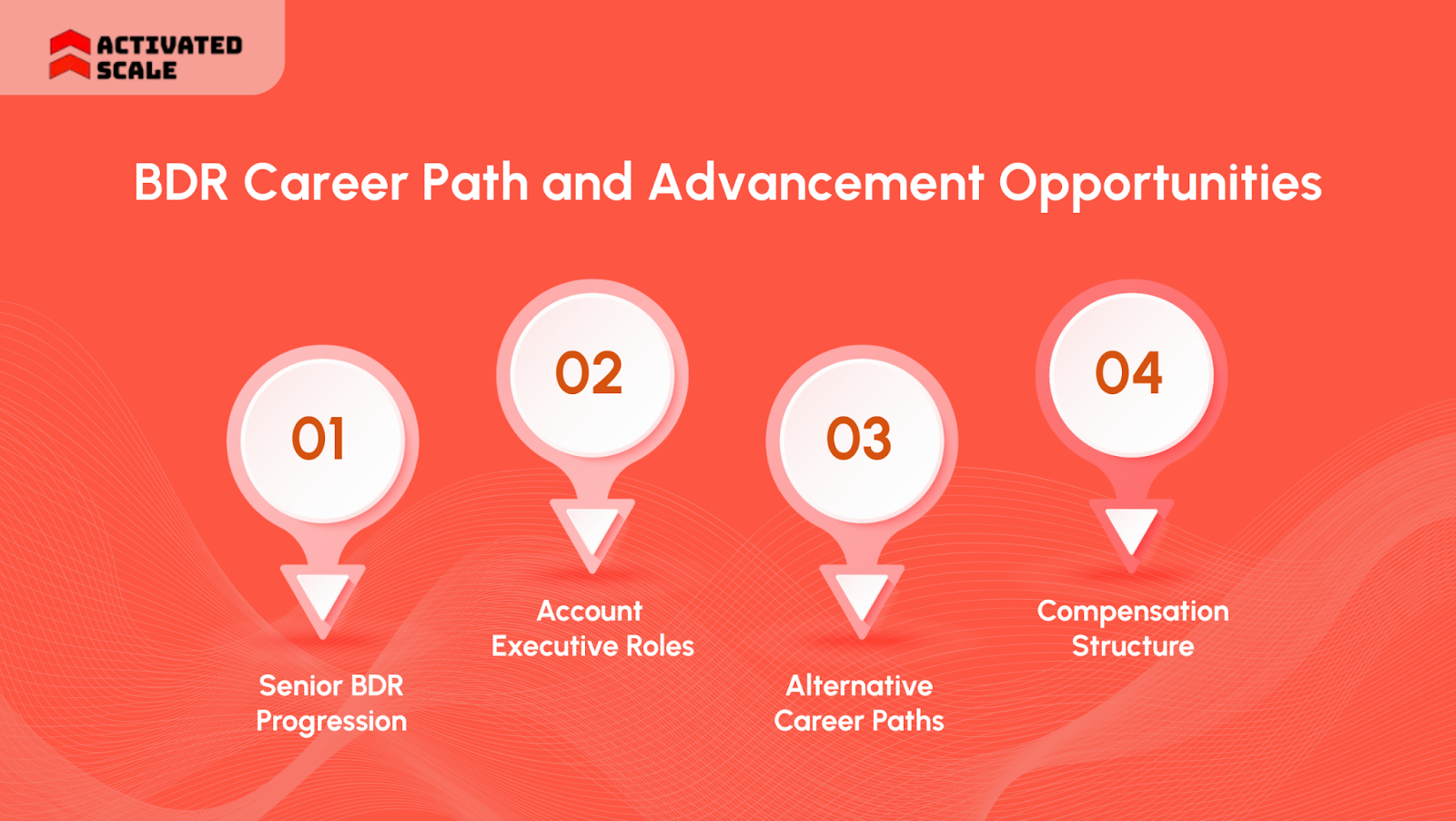
For many professionals, the BDR role is the gateway to a long-term sales career. It provides hands-on experience with prospecting, customer engagement, and sales tools, all skills that pave the way for higher positions.
Entry-Level to Senior BDR Progression
A typical progression starts with entry-level BDRs handling basic outreach and lead qualification. With experience, they move to senior BDR roles, where they may mentor new hires, manage larger territories, or handle more complex accounts.
Transitioning to Account Executive Roles
The natural next step for a BDR is becoming an Account Executive (AE). By this stage, professionals have built enough pipeline experience to confidently manage full sales cycles, from pitching to closing.
Alternative Career Paths (Sales Management, Marketing)
Not every BDR becomes an AE. Some pivot into:
- Sales management, guiding new teams.
- Revenue operations, improving processes and data use.
- Marketing functions, applying customer insights to campaigns.
Salary Expectations and Compensation Structure
- Entry-level BDRs often earn a base salary plus commission, averaging $45K–$65K annually in the U.S.
- Senior BDRs and those moving into AE roles see higher ranges, often $80K+ with commission.
Compensation reflects both performance and the ability to generate pipeline consistently.
Continuous Learning and Professional Development
Sales never stays still. BDRs must keep sharpening skills, through sales training programs, certifications, or mentorship opportunities, to stay competitive.
Also Read: Steps to Become a Business Development Officer
Common BDR Mistakes and How to Avoid Them
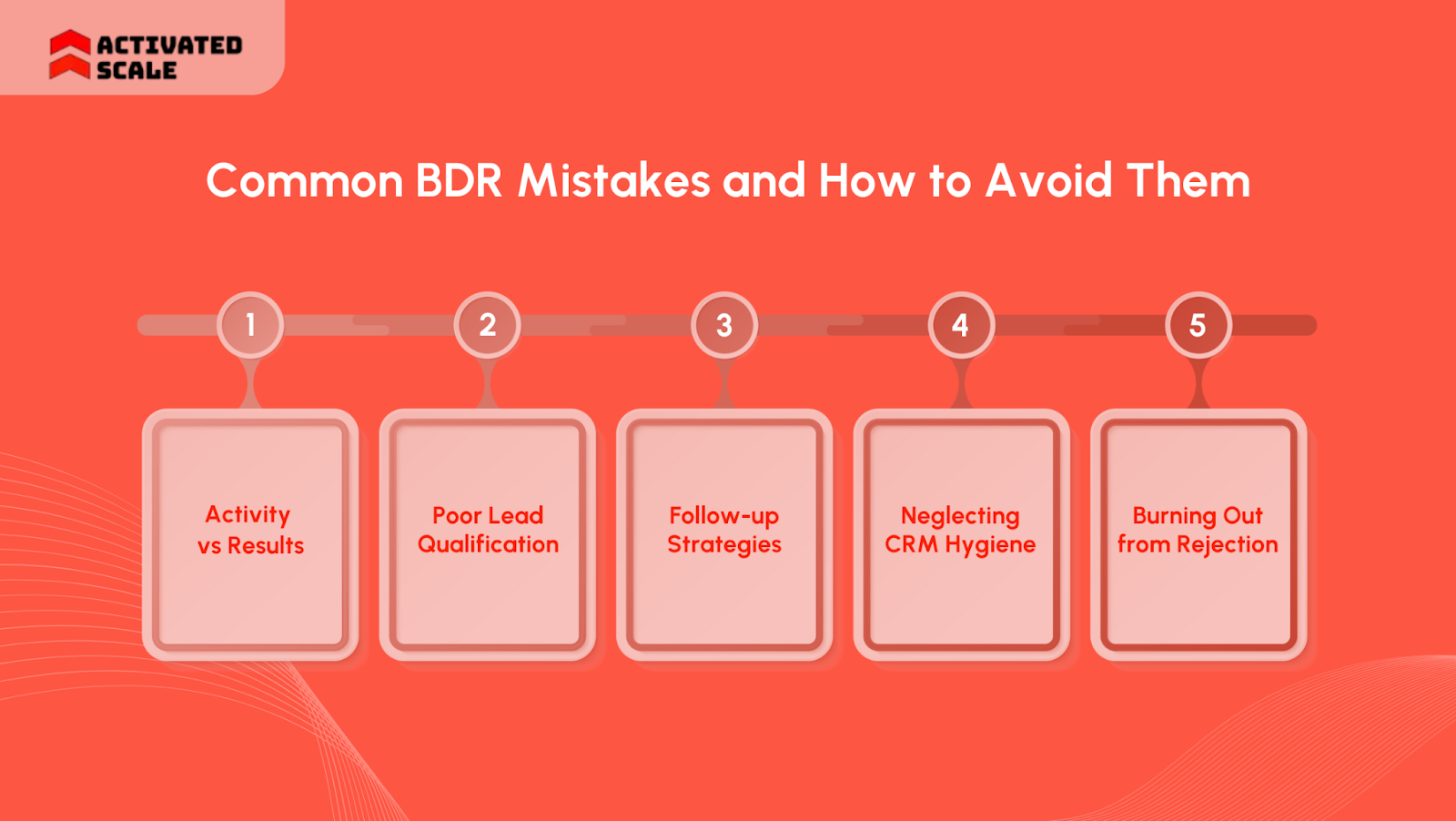
Even talented BDRs can fall into habits that limit their effectiveness. Recognizing these pitfalls early helps both individuals and sales leaders keep performance on track.
1. Over-Focusing on Activity vs Results
It’s tempting to chase numbers—making calls or sending emails for the sake of volume. But activity without thoughtful targeting leads to wasted effort. The fix: emphasize quality over quantity by prioritizing the right prospects.
2. Poor Lead Qualification Practices
Passing unqualified leads to AEs frustrates both the sales team and potential buyers. BDRs must stick to clear qualification frameworks, ensuring that only prospects with real intent, budget, and authority are handed over.
3. Inadequate Follow-up Strategies
Many deals are lost not because of lack of interest but because of weak follow-up. A structured cadence of emails, calls, and touchpoints builds trust and keeps opportunities alive.
4. Neglecting CRM Hygiene and Data Quality
Forgetting to log calls or update contact details creates blind spots in the sales process. Clean CRM records keep teams aligned and ensure no lead is left behind.
5. Burning Out from Rejection
Rejection is part of the job, but burnout happens when BDRs lack coping strategies. Building resilience, celebrating small wins, and rotating tasks help prevent early exits from the role.
Conclusion
Business Development Representatives play a critical role in building strong sales pipelines. They spark conversations, qualify prospects, and give AEs the space to focus on closing deals.
For startups and scale-ups, this role often makes the difference between slow, unpredictable growth and a steady, scalable sales process.
Still, hiring and training the right BDRs can feel like a gamble, especially when time and budgets are tight. That’s where Activated Scale comes in.
Meet Activated Scale
Activated Scale is a sales talent marketplace that connects startups with vetted, U.S.-based sales professionals. Instead of rushing into risky full-time hires, you gain the flexibility to bring in exactly the talent you need.
Services Offered
- Contract-to-Hire Sales Recruiting: Try experienced reps on a flexible basis before making full-time commitments.
- Fractional Selling: Hire SDRs and AEs part-time to fill sales gaps quickly.
- Fractional Sales Leadership: Access VPs of Sales who can design GTM strategies, sales playbooks, and partnerships.
- Marketplace Access: Choose from SDRs, AEs, and Sales Leaders who are ready to contribute from day one.
If you’re ready to build a stronger sales pipeline with less risk, explore Activated Scale today and find the right talent to fuel your growth.
Frequently Asked Questions
1. Is a BDR the same as an SDR?
No, BDRs focus on outbound prospecting, while SDRs usually handle inbound leads from marketing.
2. Do BDRs close deals?
Not typically. Their role is to qualify leads and pass them to Account Executives who handle closing.
3. Can small startups afford BDRs?
Yes. Many use fractional or contract BDRs to build pipeline without committing to full-time hires.
4. Is a BDR role only for beginners?
It’s often entry-level, but experienced BDRs bring advanced skills in prospecting and qualification.
5. How are BDRs measured?
Through meetings booked, opportunities created, and contribution to pipeline revenue, not just activity volume.
6. Do BDRs need a degree?
Not always. Sales skills, tool knowledge, and resilience often matter more than formal education.
7. What’s the career path after BDR?
Most move into Account Executive roles, but others transition into sales leadership or marketing.
The Ultimate Guide to Hiring a Salesperson!
Get the step-by-step guide to hiring, onboarding, and ensuring success!
_edi.png)
